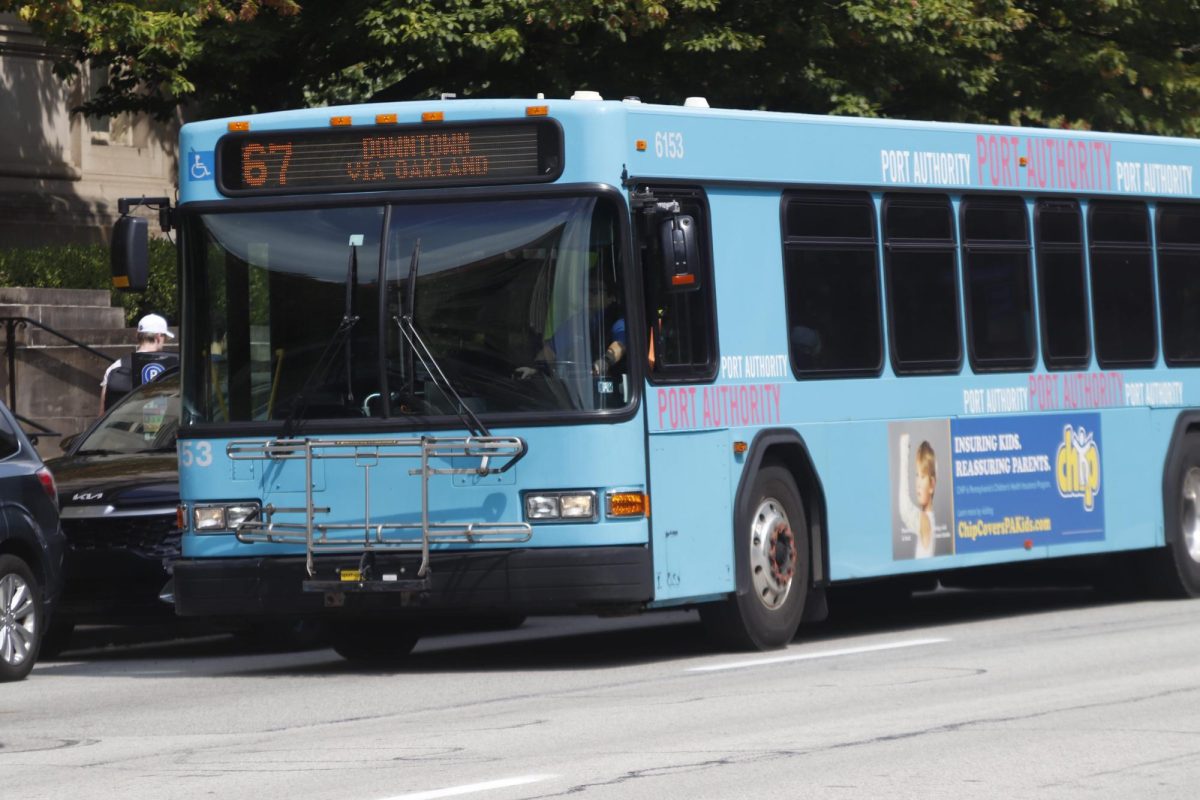A new bus line is set to be built on campus. Coined as “The University Line,” the bus route will consist of four electrically powered buses that travel directly from Oakland to Downtown Pittsburgh.
Construction of the new University Line bus route is set to begin on Sept. 13 in Downtown. This phase of construction is set to take around 18 months. The project will cost approximately $291 million and will install bus-only lanes aiming to decrease traffic from Oakland to Downtown Pittsburgh.
Currently, there are eight 61 and 71 bus routes that travel from Downtown Pittsburgh to Oakland, including 61A, 61B, 61C, 61D, 71A, 71B, 71C and 71D.
The new Pittsburgh Regional Transit project will affect the 61D, 71A, 71C and 71D bus routes, with construction on these stations beginning Oct. 1 in order to accommodate the University Line system.
The routes will now end in Oakland and no longer travel to Uptown or Downtown, and will now turn around at Robinson Street and head back outbound. To clear any confusion associated with the change, these routes will have the word “Short” added to their route names and head signs. For those traveling outbound in Oakland, all eight routes will remain available.
Phase two of the project will consist of construction of more bus stations in Uptown and Oakland, and is set to begin in 2024. The length of the construction for phase two has not yet been finalized.
PRT spokesperson Adam Brandolph said that PRT plans to consolidate outbound buses from both Fifth and Forbes avenues to just Forbes Avenue.
“In Oakland, the biggest change people will notice is that, once fully constructed in a few years, all buses will travel outbound on Forbes Avenue, whereas today outbound buses are split between Forbes and Fifth avenues,” Brandolph said. “The bus-only contraflow lane on Fifth Avenue will become a bike lane.”
Brandolph said the construction of University Line bus stations will enhance the experience of using the bus for transportation.
“Not only will the buses be traveling with the flow of traffic to reduce confusion and improve safety, [but] new stations will provide better lighting and amenities, like benches, ticket vending machines, real-time bus arrival information and more,” Brandolph said.
Katie Eckert, a sophomore rehabilitation sciences major who is living in Centre Plaza Apartments this year, uses the 71A and 71C bus routes daily to commute to campus. For her, the lack of communication surrounding bus route changes is a cause of concern.
“I don’t know too much about the bus routes, but my roommates and I are concerned about the lack of information available about these bus changes, and are worried they will affect how we get to and from classes each day,” Eckert said.
Eckert said the bus route changes will complicate her commute to class, as well as trips to Downtown.
“It also just sucks because the 71A and 71C are the only ones that go right by our house, and not being able to go Downtown for activities without changing buses is hard,” Eckert said.
In addition to inconvenience, Eckert said construction on the 71A and 71C bus lines could affect her safety.
“I am also worried about my safety if I have to take a different bus and walk about ten minutes back to my apartment,” Eckert said.
Kainyn Barbine, a sophomore accounting major, said while he is not negatively affected by the new PRT changes, he can understand why these adjustments could be stressful for some students.
“I’m personally not too bothered by the change, just because I take the same buses every day from off campus,” Barbine said. “I get the concerns people have about changing bus lines and adding confusion to the routes, but I would imagine they’ve thought about the changes and how it’ll affect people.”
Barbine said he is sympathetic for those who regularly take the bus downtown.
“I mostly just feel bad for those that’ll have to take two buses to get downtown, [as] it can be a coin toss [when it comes to] making it on time with that,” Barbine said. “I also don’t think people know all of the buses that also head downtown from Oakland, [such as] the 67 and 69 lines that pass right by Steel Plaza.”
Barbine said he was unaware that the changes in bus routes are a product of the University Line project.
“I haven’t heard about the University Line yet, but that would probably mitigate most of the issues the change might have,” Barbine said.
Brandolph said the University Line system will make for less traffic congestion in Oakland, both from cars and Port Authority buses themselves.
“As far as traffic, there will be fewer buses in mixed traffic; buses will have their own lanes on both Fifth and Forbes through Oakland and through much of the University Line corridor,” Brandolph said. “Today, there are so many buses that travel between Downtown and Oakland that they tend to bunch up on themselves, making service inefficient and unreliable. The University Line will maintain high frequency, but not to the extent that buses will be frequently sitting in traffic behind other buses.”
Brandolph also said the new electric bus system is a more environmentally friendly alternative to the existing diesel buses.
“Although our current fleet of diesel buses are the cleanest ever, electric buses will take it several steps further,” Brandolph said. “These buses have no tailpipe emissions, are much better for the environment and reduce our reliance on fossil fuels.”



